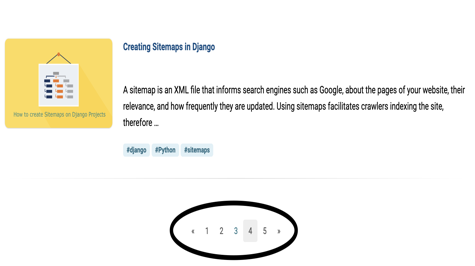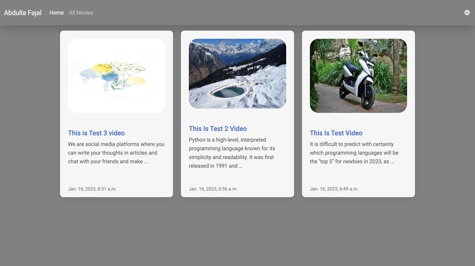In this article we learn about how to create a django feed, In Django, you can create a "feed" in several ways, depending on the type of feed you want to create and the data you want to include in it. Here are a couple of examples:
RSS feed:
Use the django-feedgenerator package to create an RSS feed of your data it comes installed with Django.
You can create a feeds.py that returns an RSS feed, and then adds a URL pattern that maps to that feeds.py.
from django.contrib.syndication.views import Feed
from django.utils.feedgenerator import Rss201rev2Feed
from django.conf import settings
from blogs_app.models import YourModels
from django.urls import reverse
class CustomFeed(Rss201rev2Feed):
def add_item_elements(self, handler, item):
super().add_item_elements(handler, item)
handler.addQuickElement("image", item["image"])
class EspereFeed(Feed):
feed_type = CustomFeed
title = "Espere.in"
link = "you_link"
description = "We're a place where user share his experience, stay up-to-date and grow their knowledge"
def items(self):
return YourModels.objects.filter(status=1)
def item_title(self, item):
return item.title
def item_description(self, item):
return item.content
def item_link(self, item):
return reverse("read-more", args=[item.slug])
def get_context_data(self, **kwargs):
setattr(
self, "request", kwargs["request"]
) # to access the request object later
return super().get_context_data(**kwargs)
def item_extra_kwargs(self, item):
img_url = item.thumbnail.url
request_url = self.request.build_absolute_uri("/")[:-1]
image_url_abs = f"{request_url}{img_url}"
return {"image": image_url_abs}
You need to enter your URL now
from django.urls import path
from myapp.feeds import EspereFeed
urlpatterns = [
.......
.......
path("feed", EspereFeed(), name="feed"),
]
In the end, it's important to test and thoroughly evaluate your feed to ensure that it's working as expected and providing the necessary information to your users. You can use tools such as an RSS reader, or Postman for JSON feed to check the feed and its data. It's also a good idea to keep an eye on any error logs, to help you quickly troubleshoot any issues that may arise.
Additionally, you should consider optimizing your feed's performance by looking at factors such as database queries and caching, to ensure that it can handle a high volume of traffic.
Also, remember to keep your feed updated with new information as your content updates.
In summary, creating a feed is an important part of a web application, and by using Django, you can easily create a feed of your data in different formats like RSS or JSON and return it to the client.
I hope this helps you









